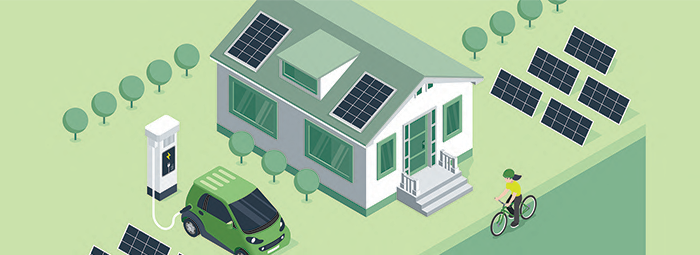
©2023 This excerpt taken from the article of the same name which appeared in ASHRAE Journal, vol. 65, no. 7, July 2023.
About the Author
Paul Torcellini, Ph.D., P.E., is a principal engineer at the National Renewable Energy Laboratory in Golden, Colorado, and a member of the Product and Services Subcommittee of the ASHRAE Task Force for Building Decarbonization and is chair of Standard 228. The views presented are those of the author.
For years, decarbonization has taken the lead in conversation on the future of the built environment. Solutions to achieving a low-carbon or decarbonized economy have been proposed and implemented globally, with a boon of new technologies and resources becoming increasingly available to consulting engineers, designers and building owners who wish to decarbonize. This article covers practical advice and knowledge on decarbonizing buildings.
What Are Some of the Technology-Based Solutions That Contribute To Decarbonization?
Let’s start at the top of the energy pie—with the premise that somewhere around 80% of the world’s energy supply is somehow carbon-based today. So, how do we use less of that? And how do we make buildings more efficient? That's where technologies and strategies for avoiding emissions come in, which is where ASHRAE has one of the biggest opportunities—how do we get buildings to use less energy in general?
Fuel going into buildings is scope 1. Fossil fuels burned directly on-site. So there’s a very clear pathway of what you need to make go away if you’re trying to decarbonize. But then the other part of it—and often more than half of it—is electricity. We call these scope 2 and say, “Where’s that electricity being produced and where it’s coming from?” A large fraction of electricity is generated from fossil fuels. And remembering that the biggest part of the energy pie is buildings shows the importance of substantially reducing the energy that buildings use in both new construction and retrofits.
If you look at the Energy Information Administration data,1 you see a leveling off on how much energy buildings are using in the United States (Figure 1). In a flat scenario, we are building buildings at the same rate that we are saving energy in existing buildings. If it is going up, we are not keeping up and the energy pie will continue to grow.
Overall, even if we talk about individual buildings becoming more efficient, we must have a pretty substantial reduction in energy to make this work. And so how is that done? The first place is new buildings. It’s a blank slate, with lots of opportunity to really get energy use intensity (EUI) down to 50% or less of what we kind of consider normal code compliant buildings. The ASHRAE Advanced Energy Design Guide 2 series covers this topic and gives EUI targets that can really help consulting engineers and designers. We also have good heat pump technologies out there today. With a reduction in loads, air-source and ground-source heat pumps make a lot of sense to heat and cool the building.
Recently, I was cleaning out my mother’s house and I found a brochure put out by Northeast Utilities. It was branded as their 80s and 90s program, which to me implies that it came out in the late 1970s. It’s all about heat pumps. I could reprint this today, and it would still be relevant. Heat pumps have certainly improved. We’ve made them more efficient than what this brochure says. We’ve made them more robust. We certainly can install them, and they come in all kinds of flavors, shapes and sizes. It’s not that it’s a new technology, but it’s a technology that is underutilized. We’re also getting better at building envelopes and testing them. This helps the heat pump implementation.
The lighting industry has come leaps and bounds in terms of moving to high efficiency LEDs. Even if you have LEDs that were installed 10 years ago, it’s worth even looking at those because the efficiency has improved so much. A key solution is efficiency, efficiency, efficiency.
Read the Full Article
ASHRAE Members have free access to the full-text PDF of this article as well as the complete ASHRAE Journal archives back to 1997 in the Free Member Access Area.
Non-members can purchase features from the ASHRAE Bookstore. Or, Join ASHRAE!
Return to Featured Article Excerpts
Return to ASHRAE Journal Featured Article Excerpts